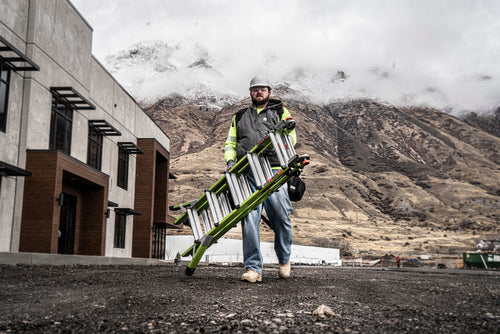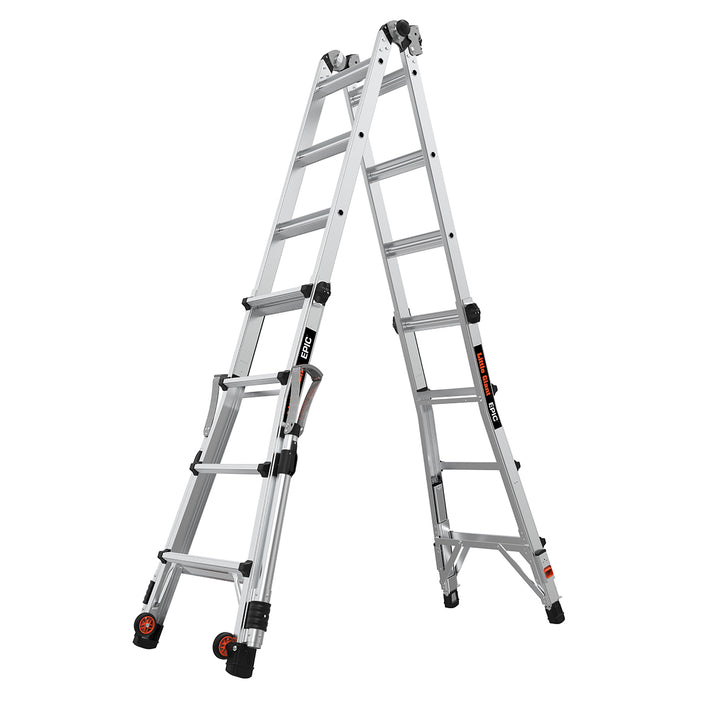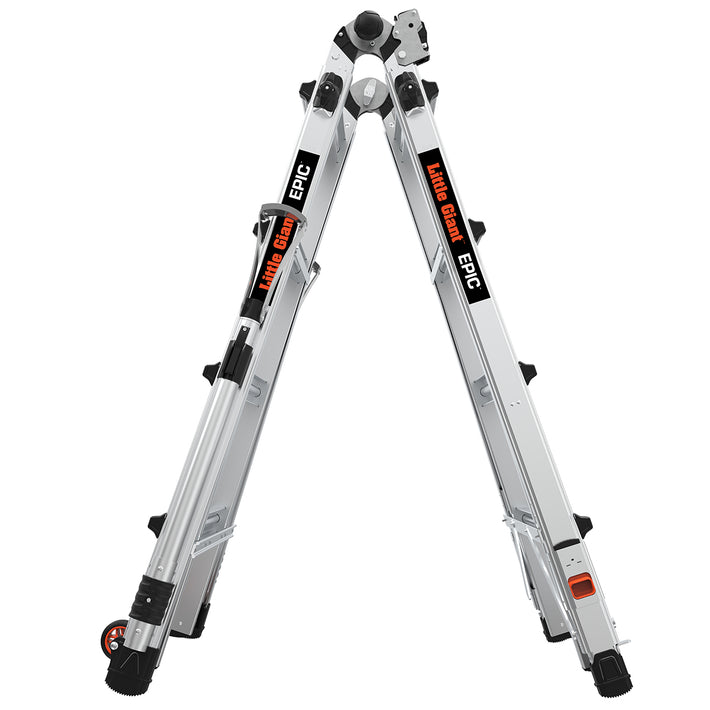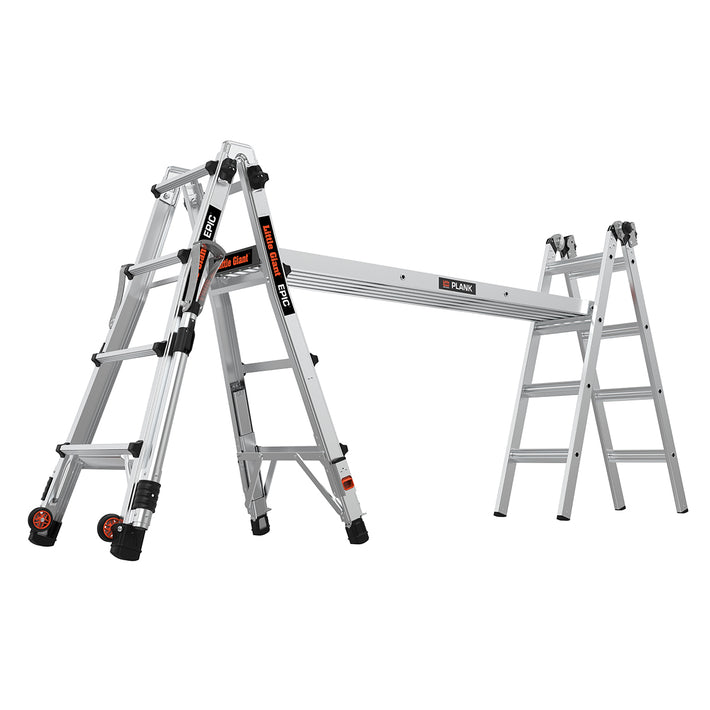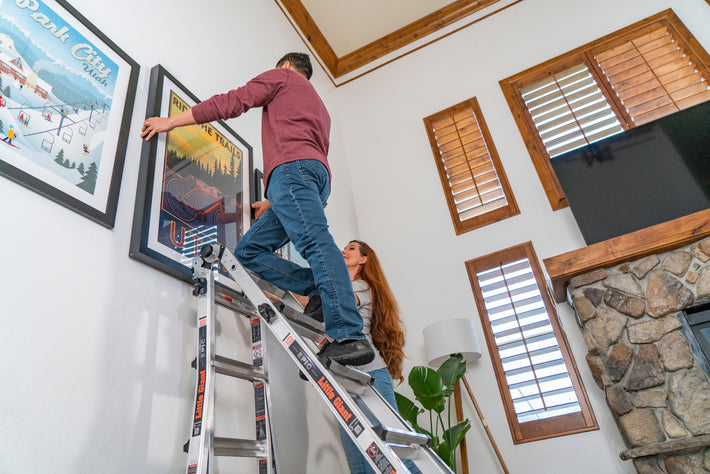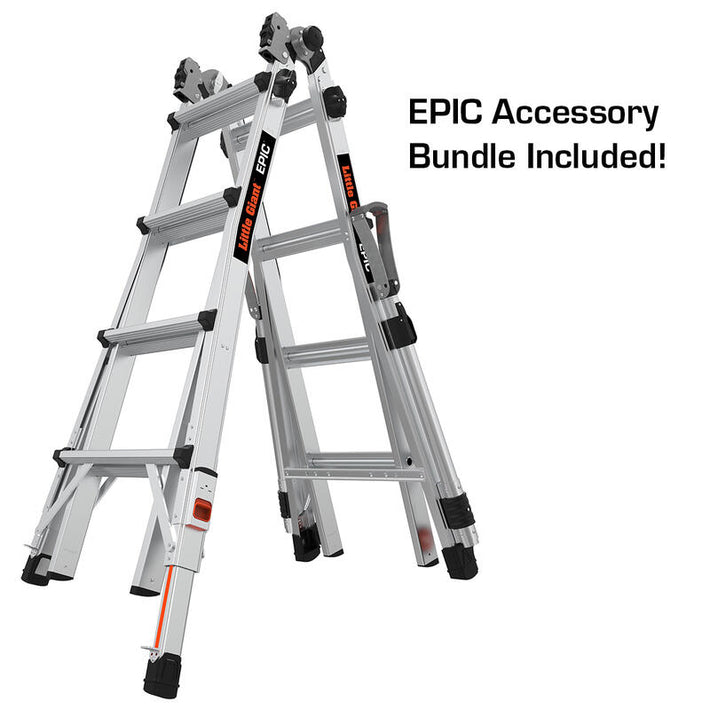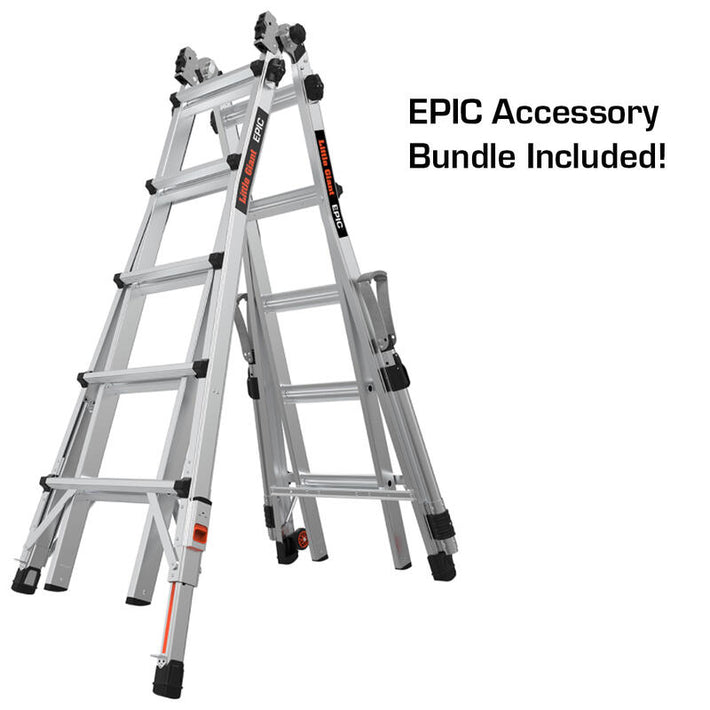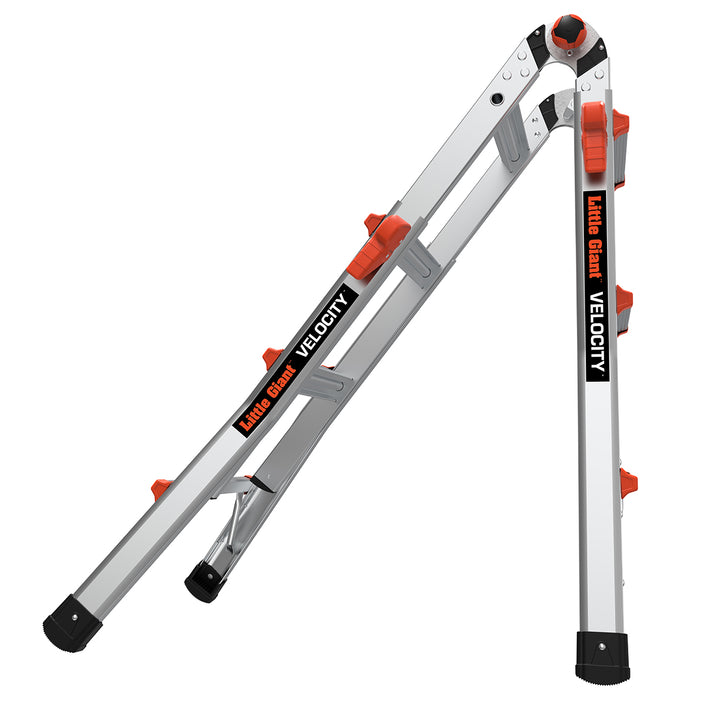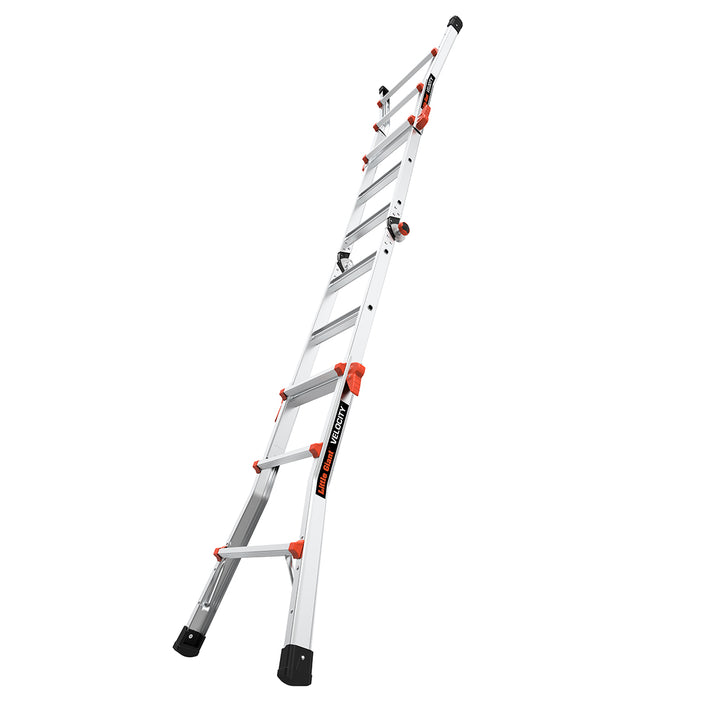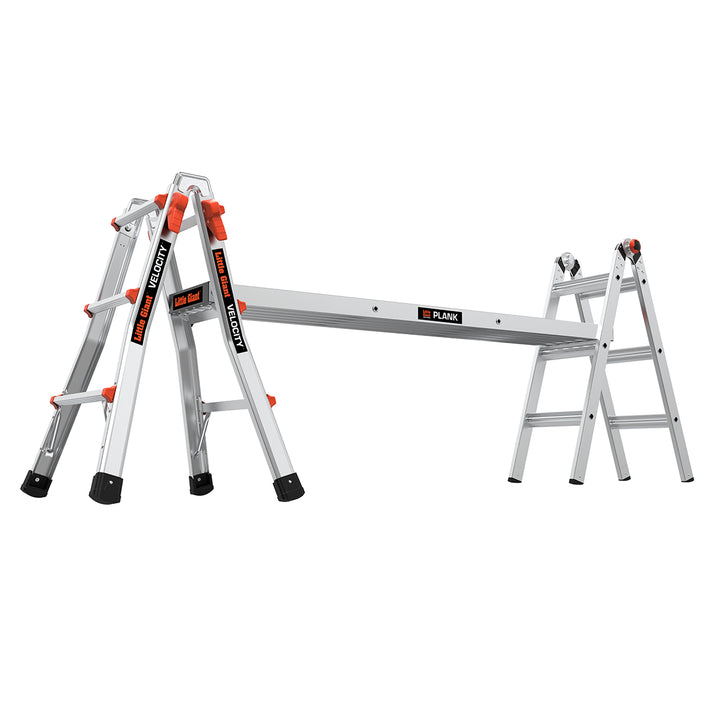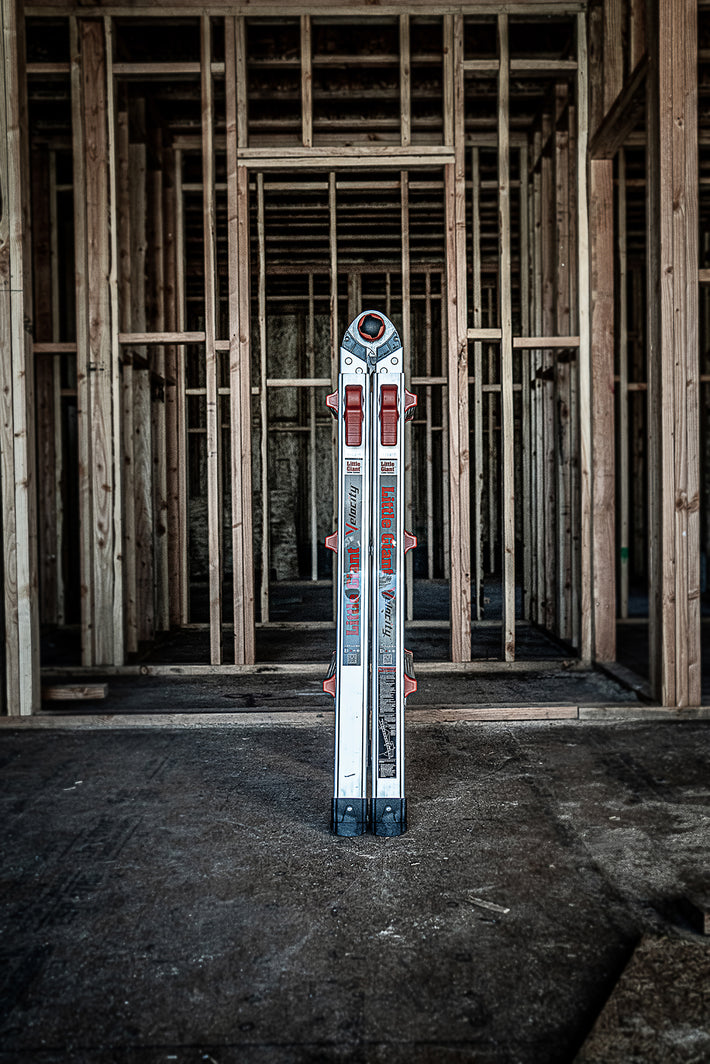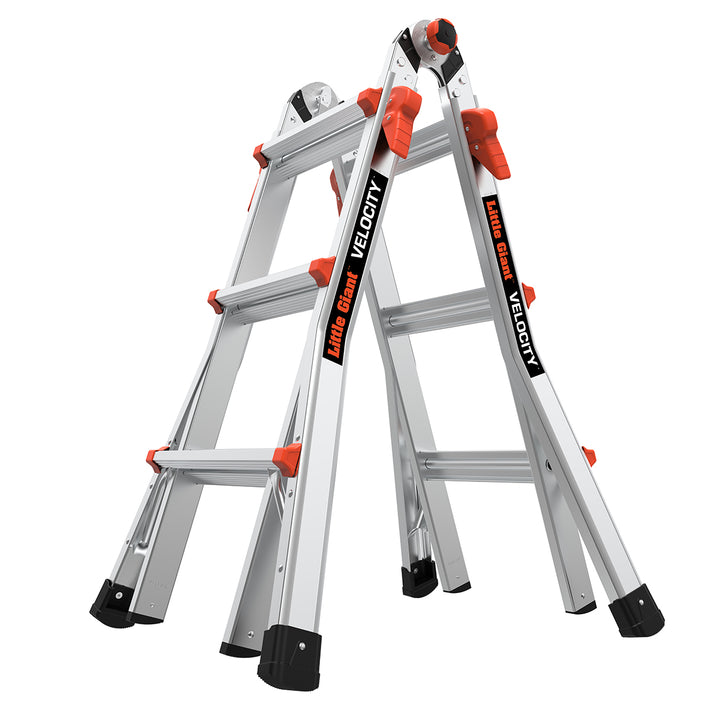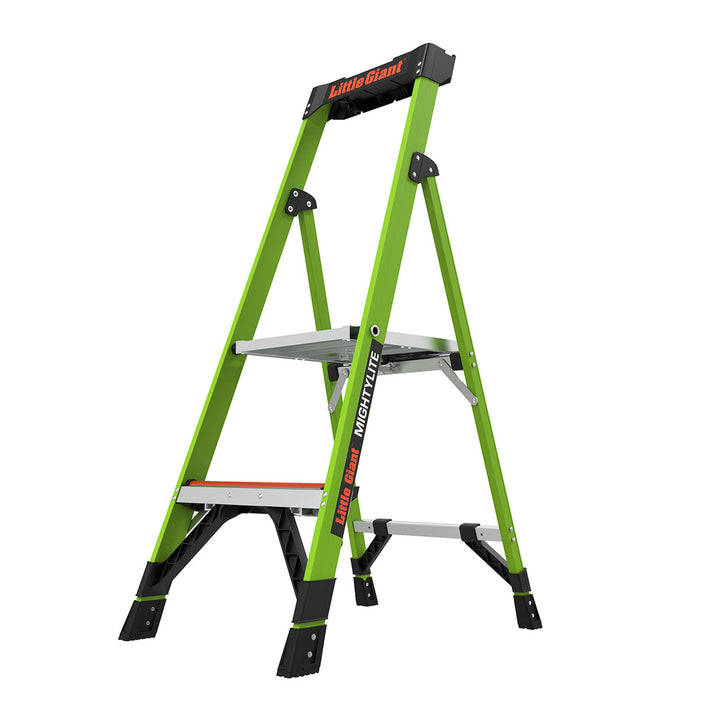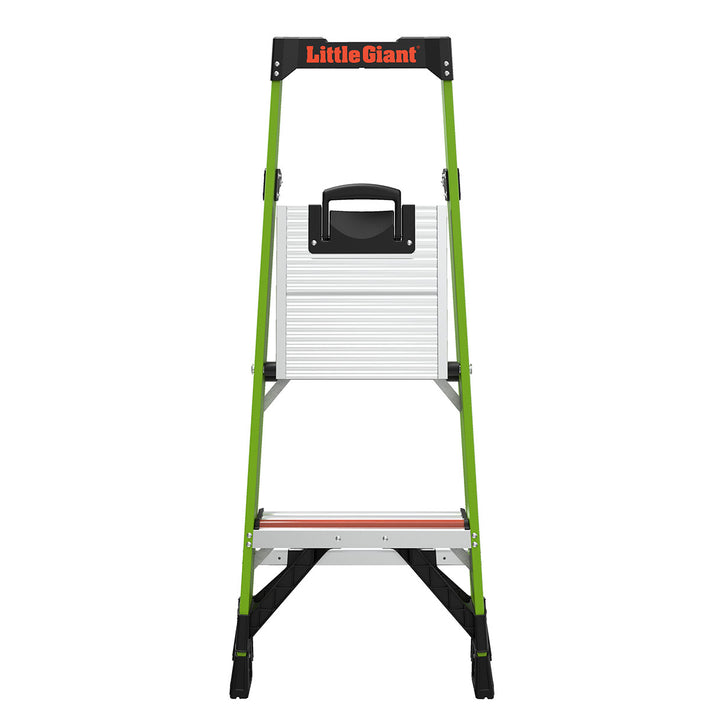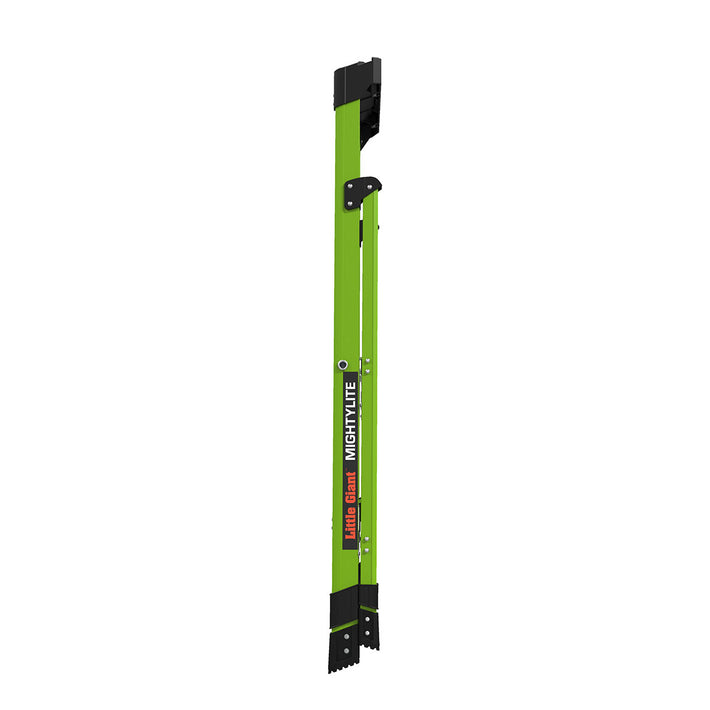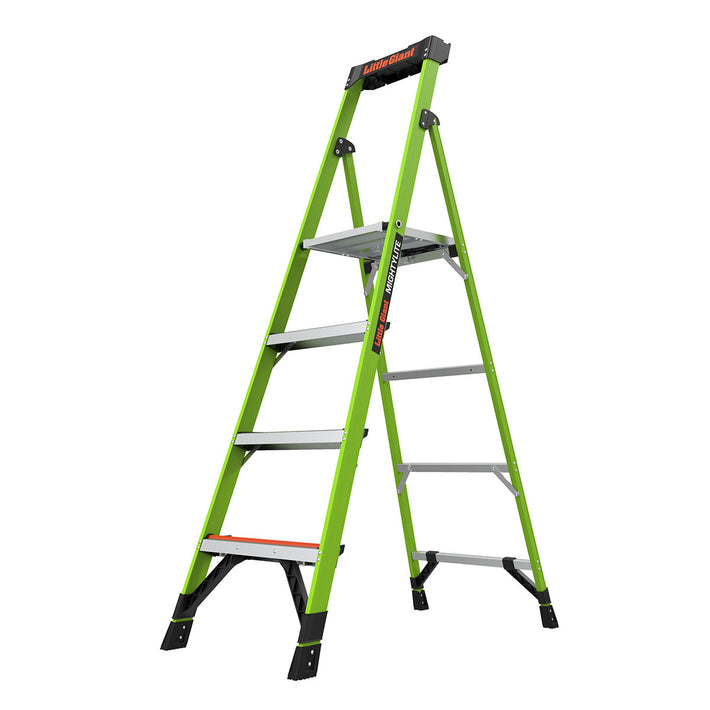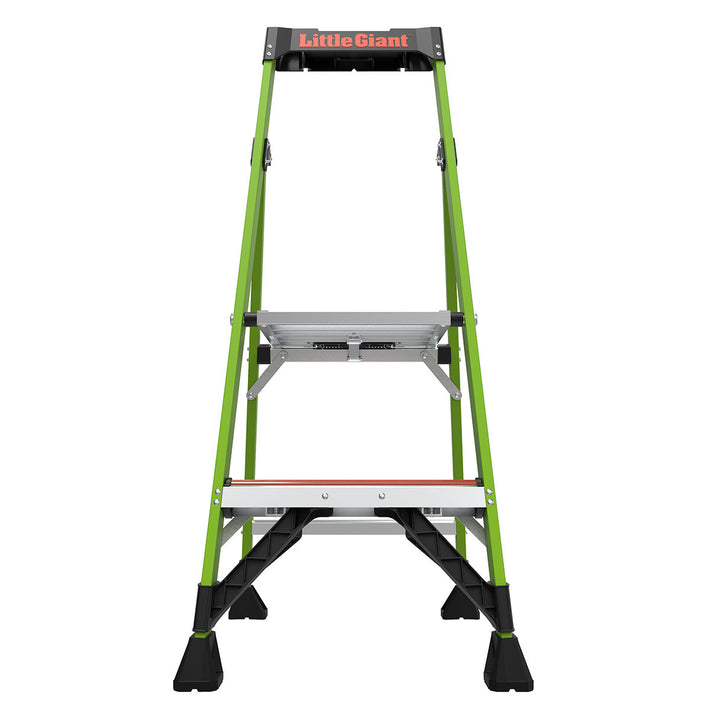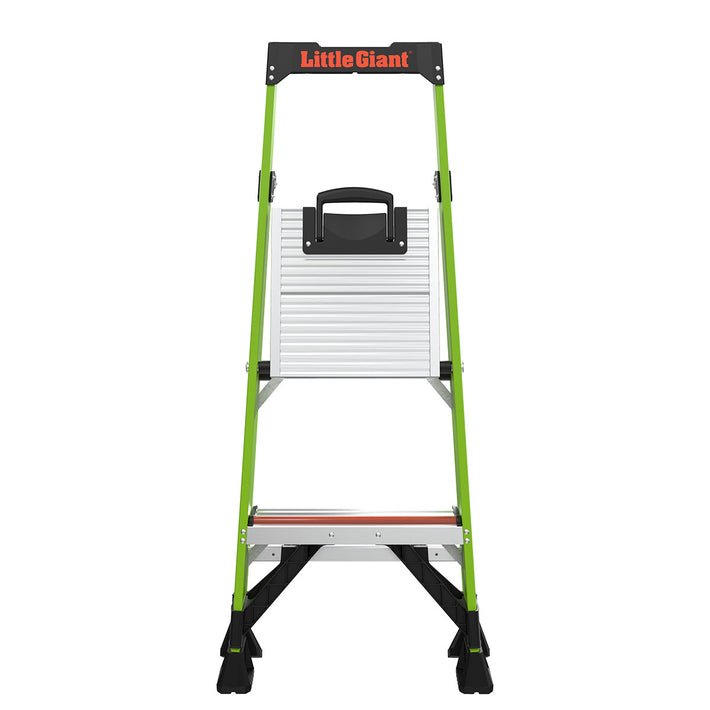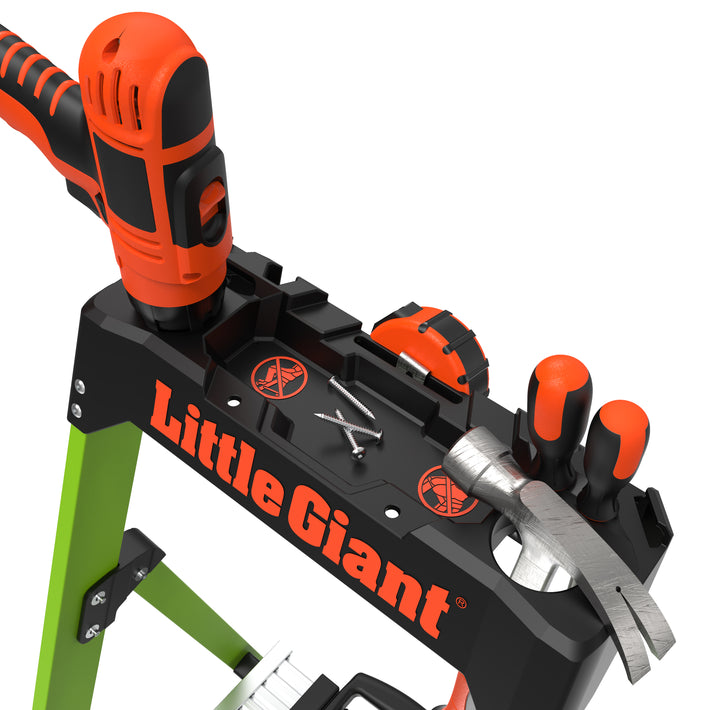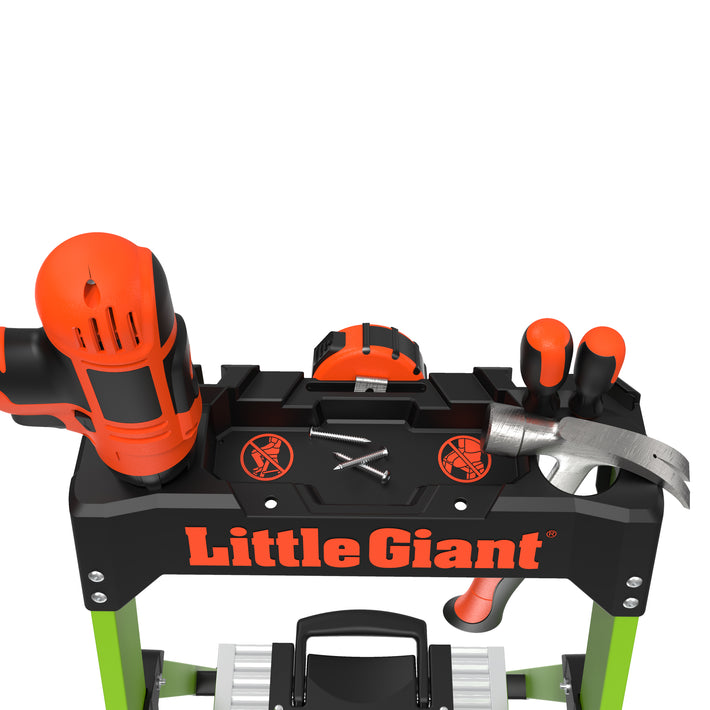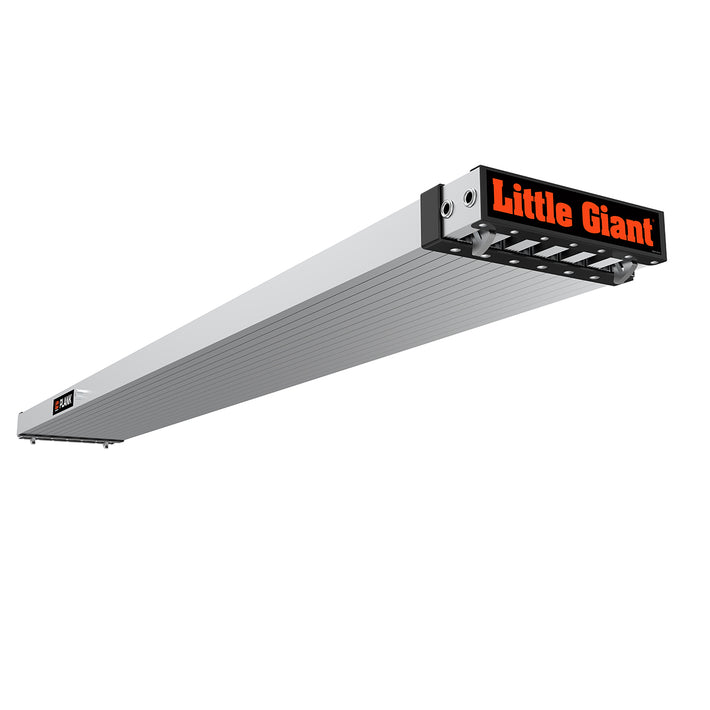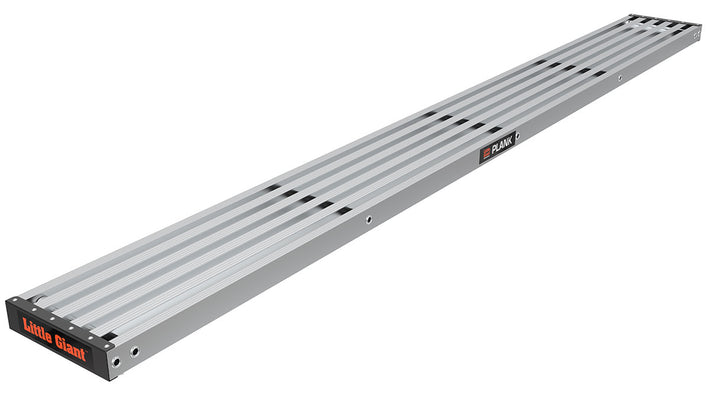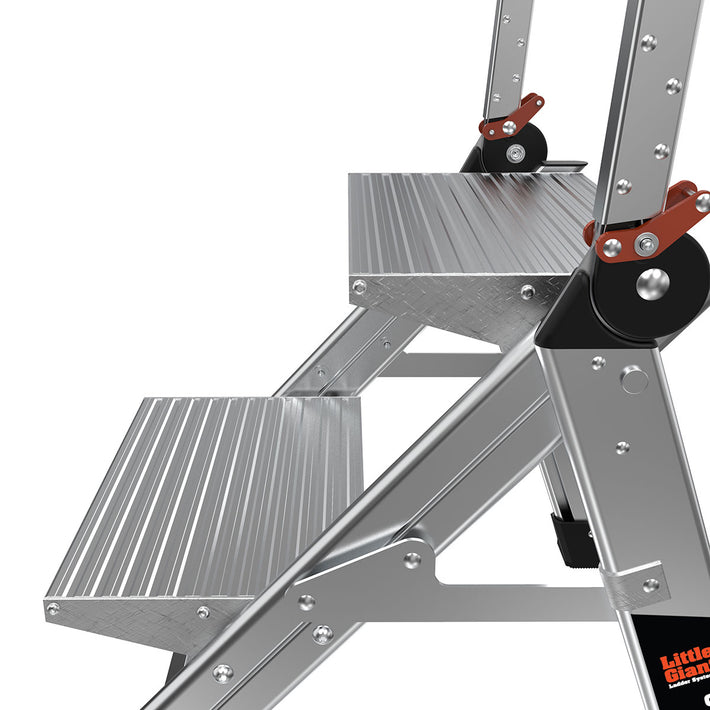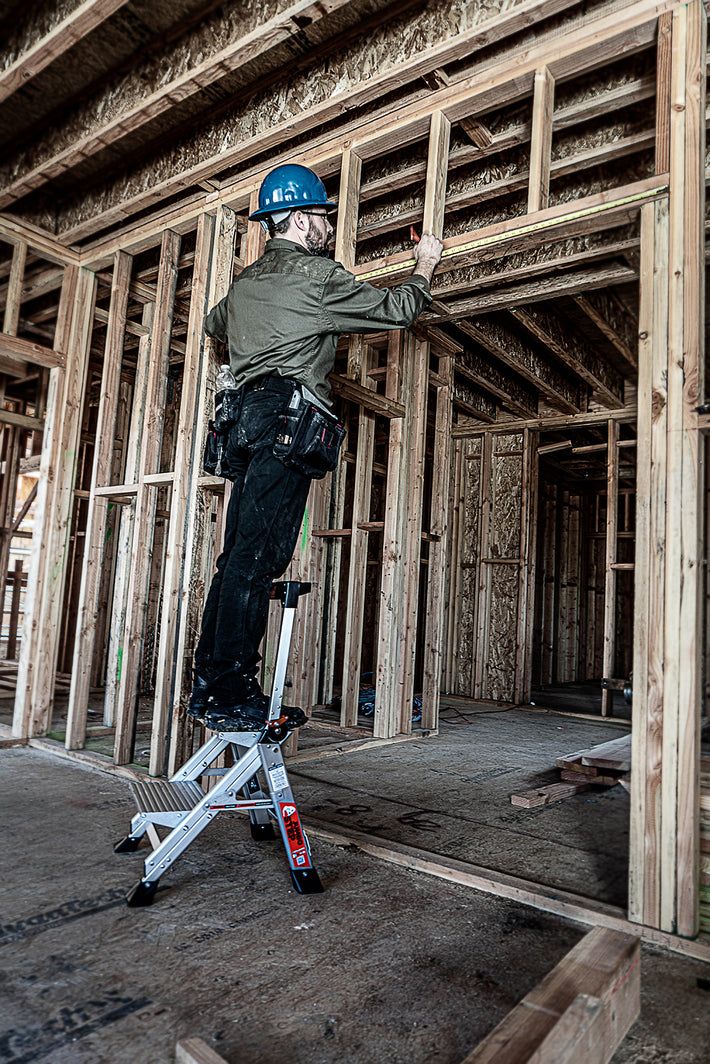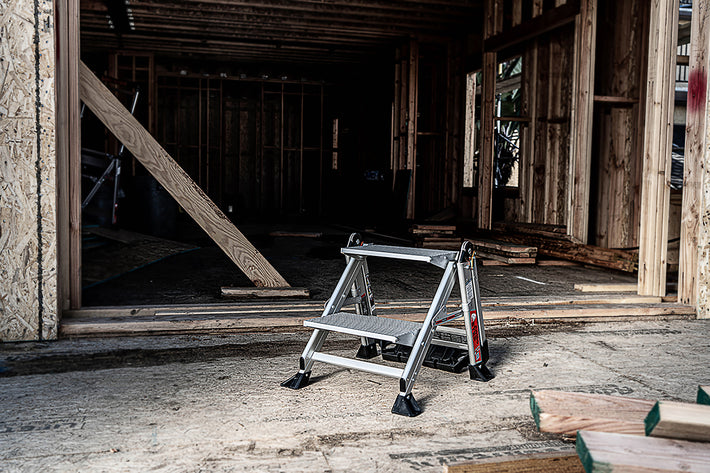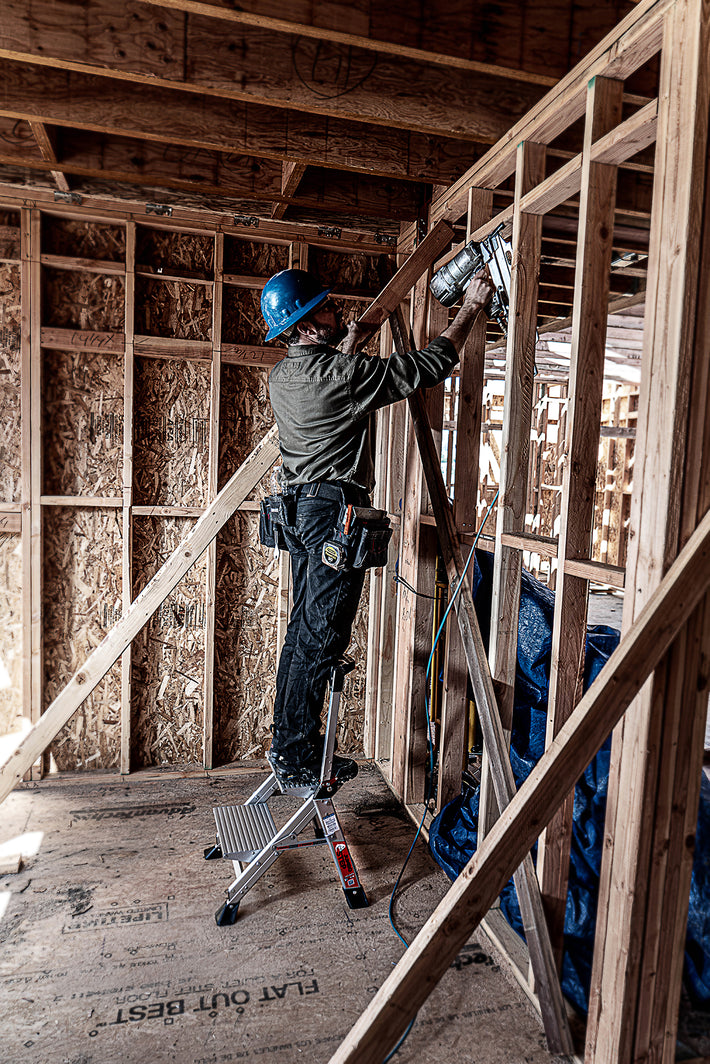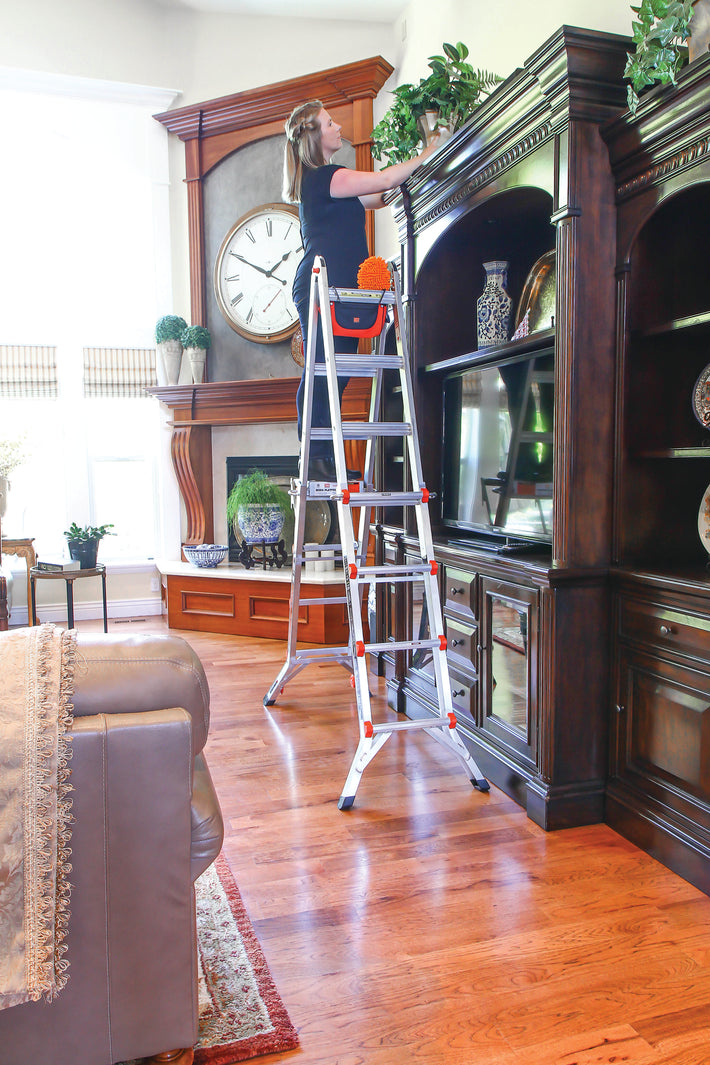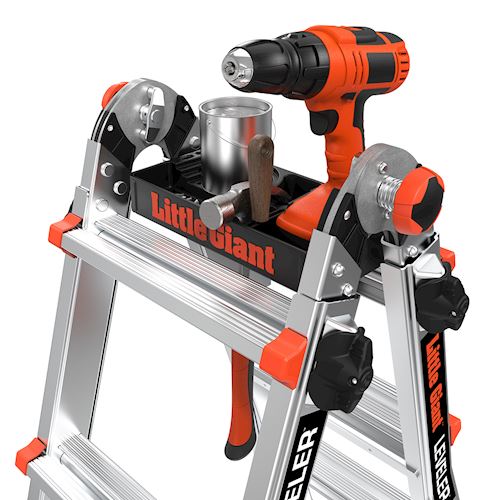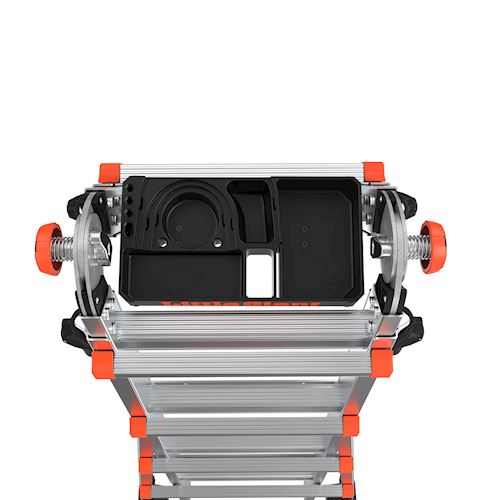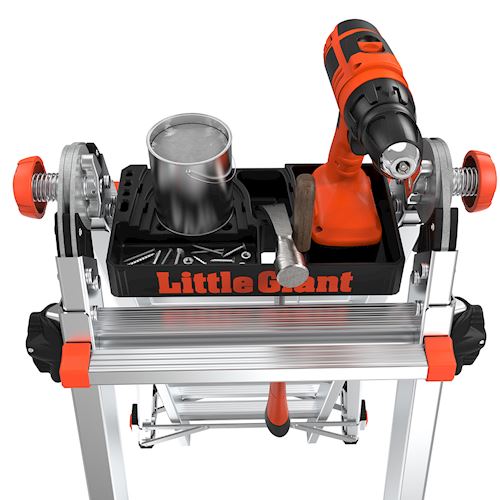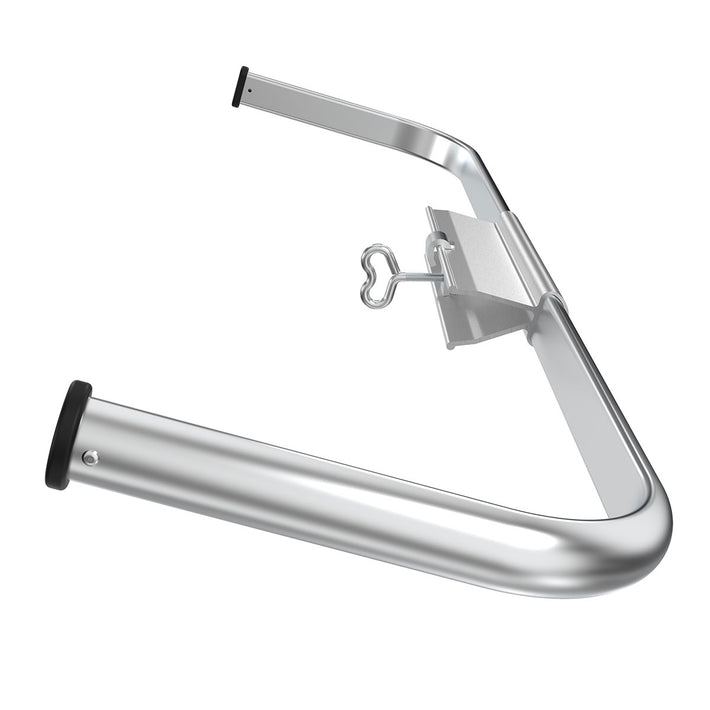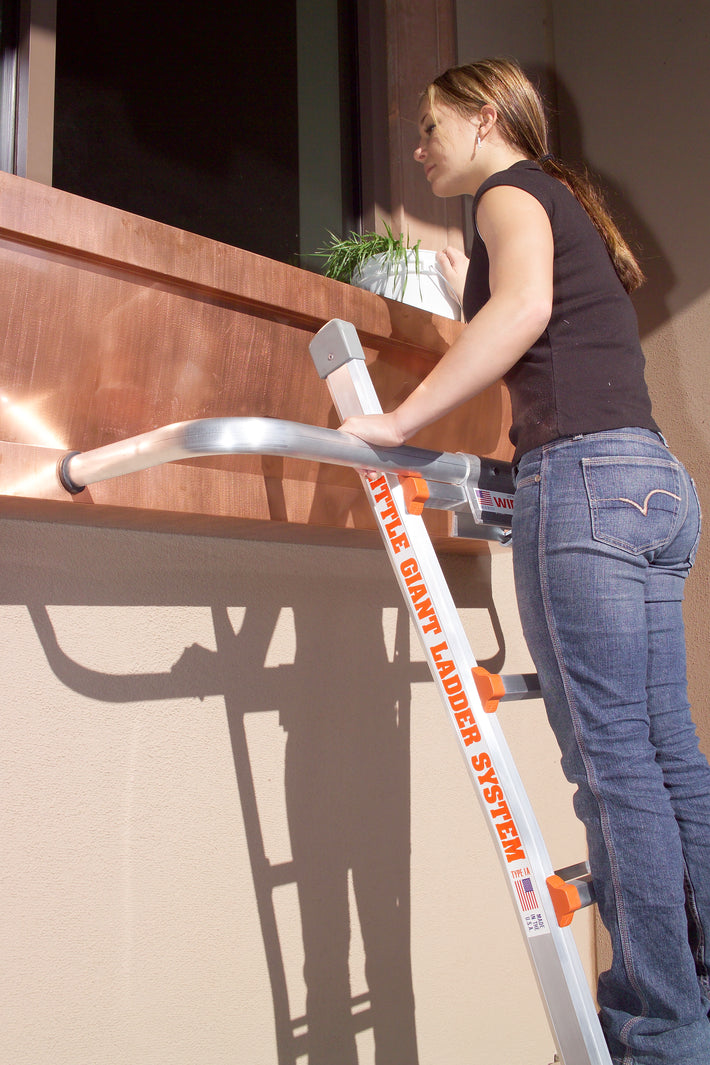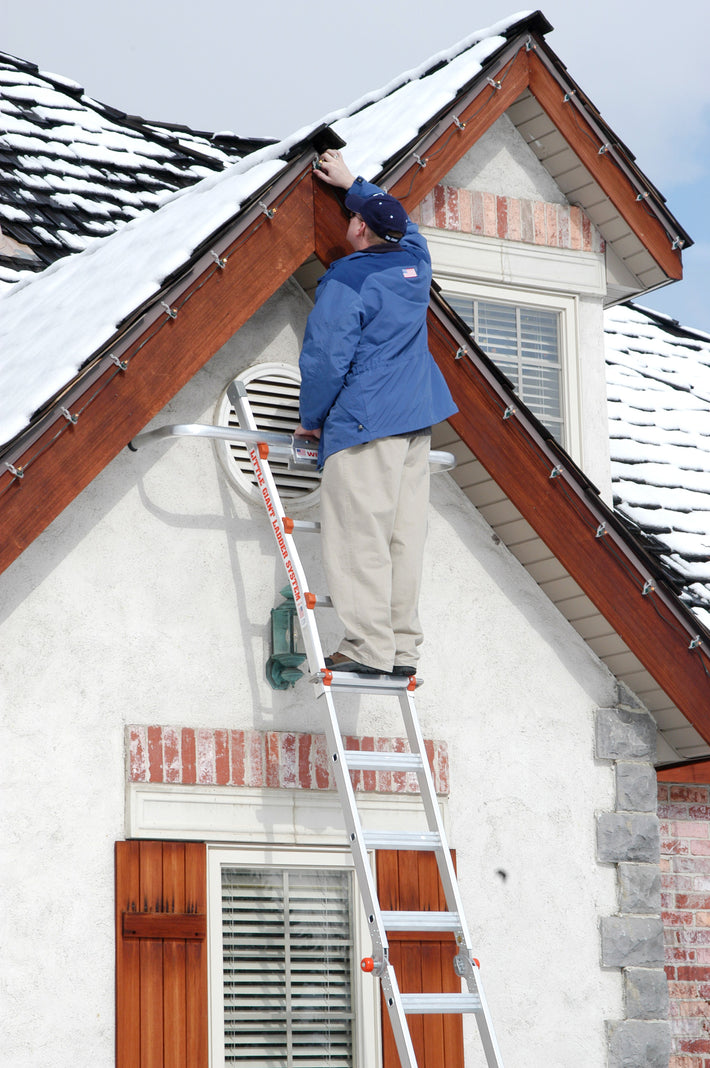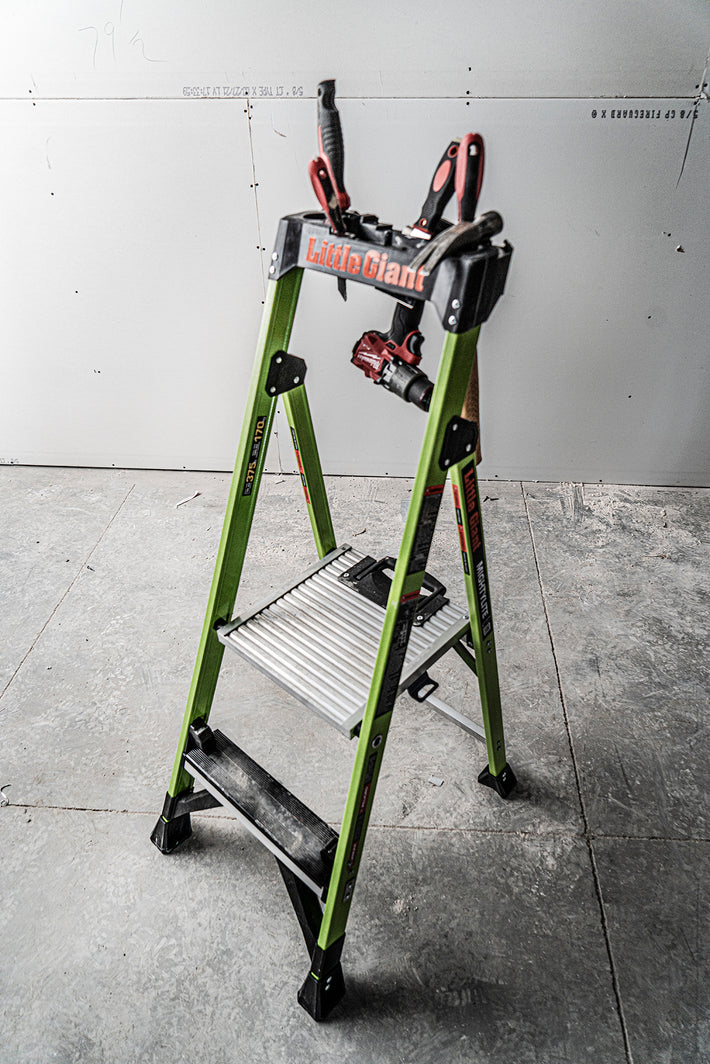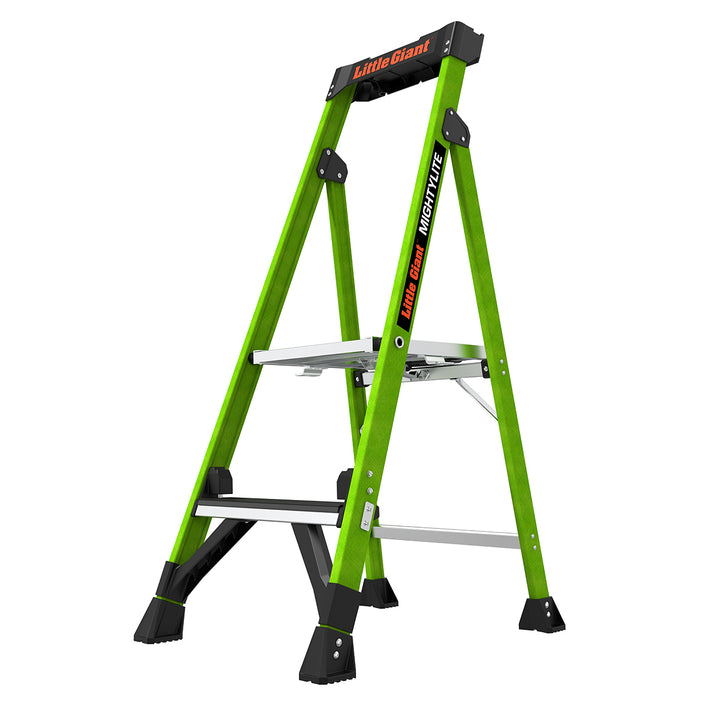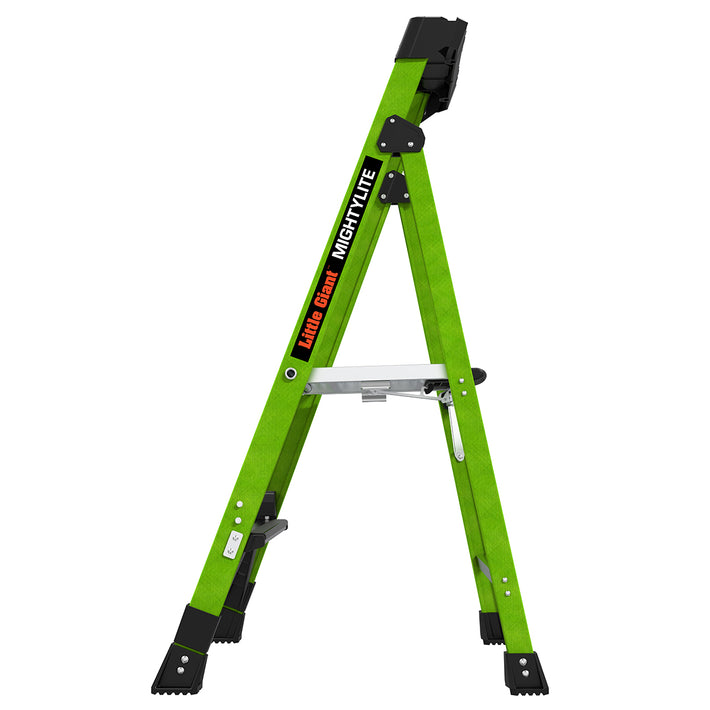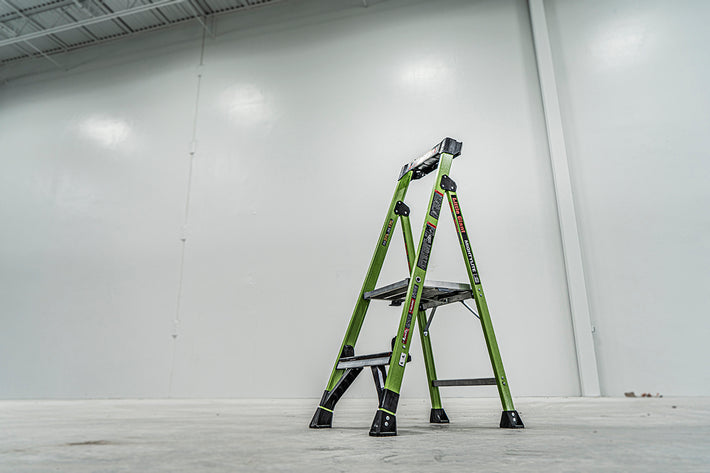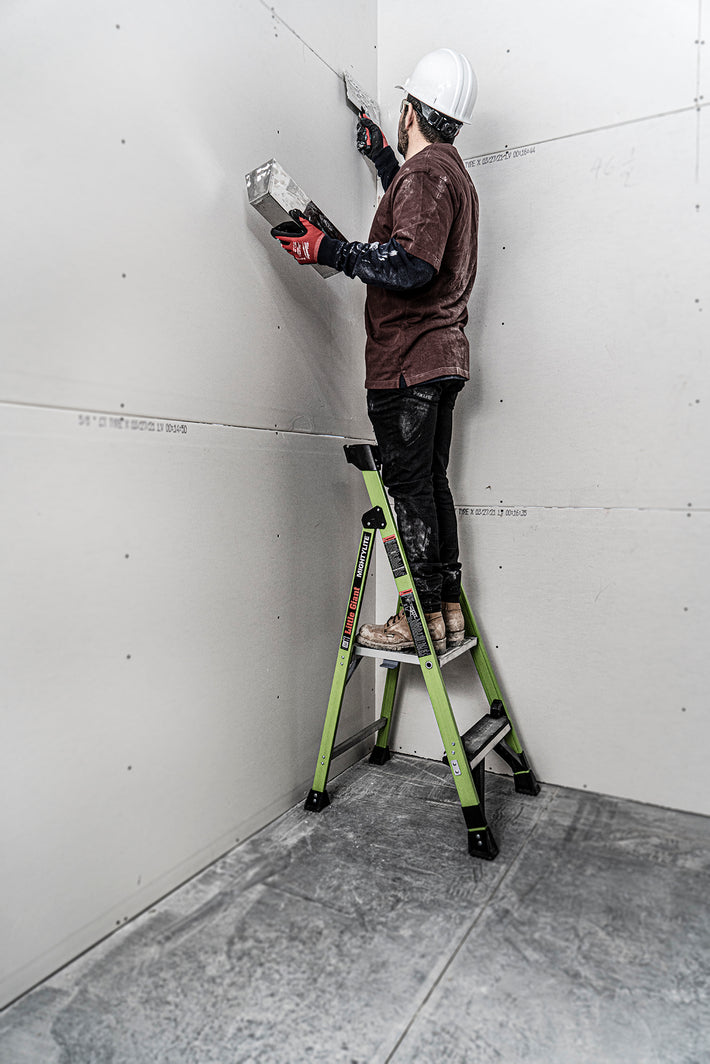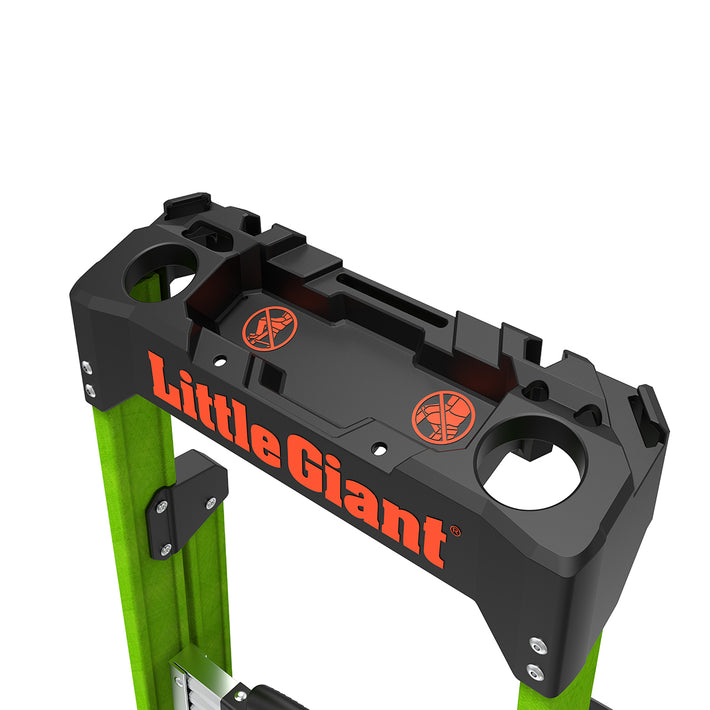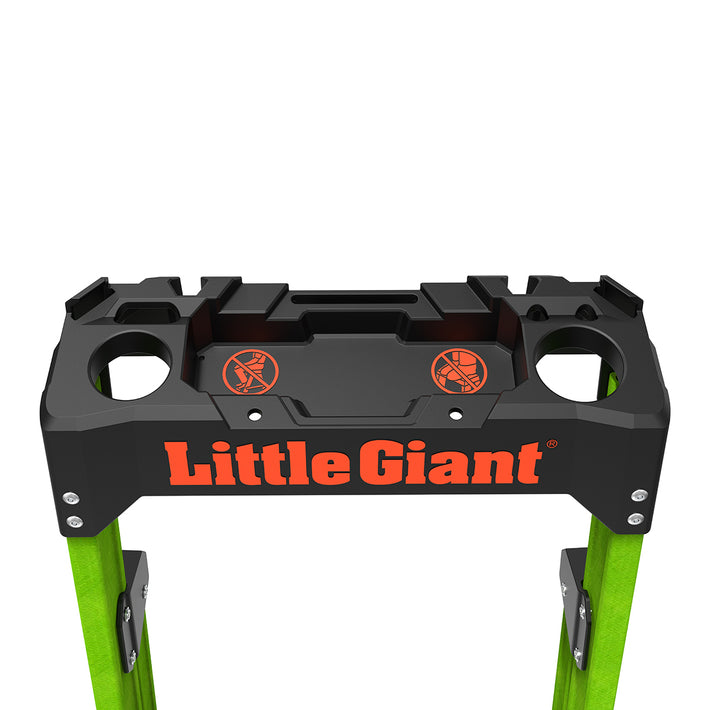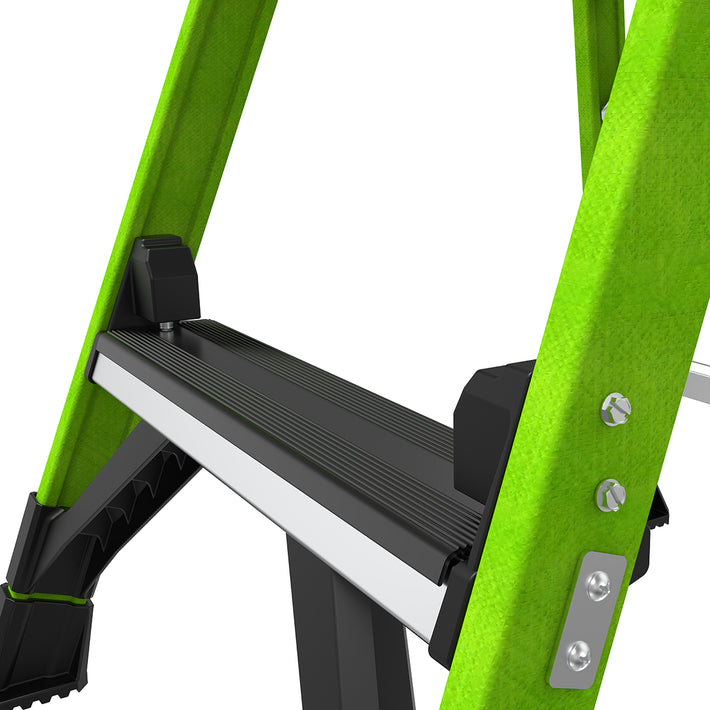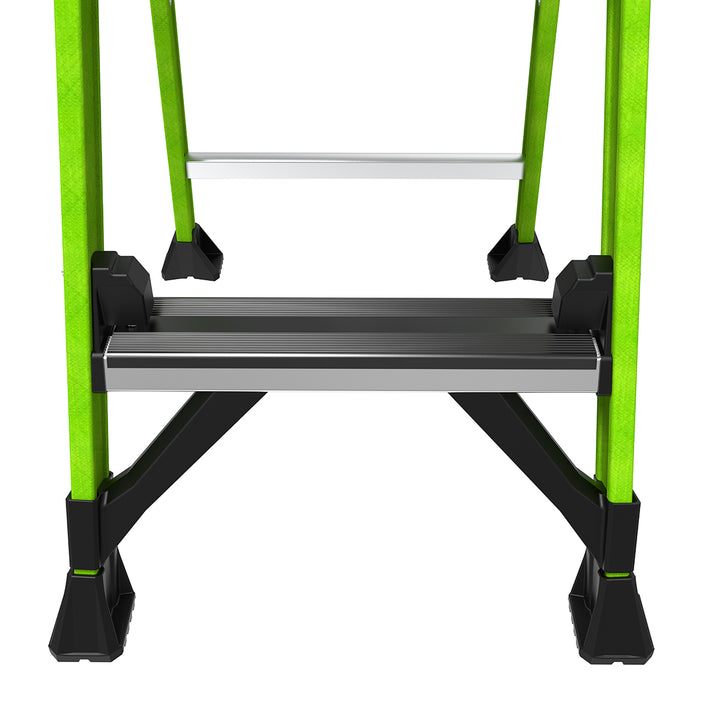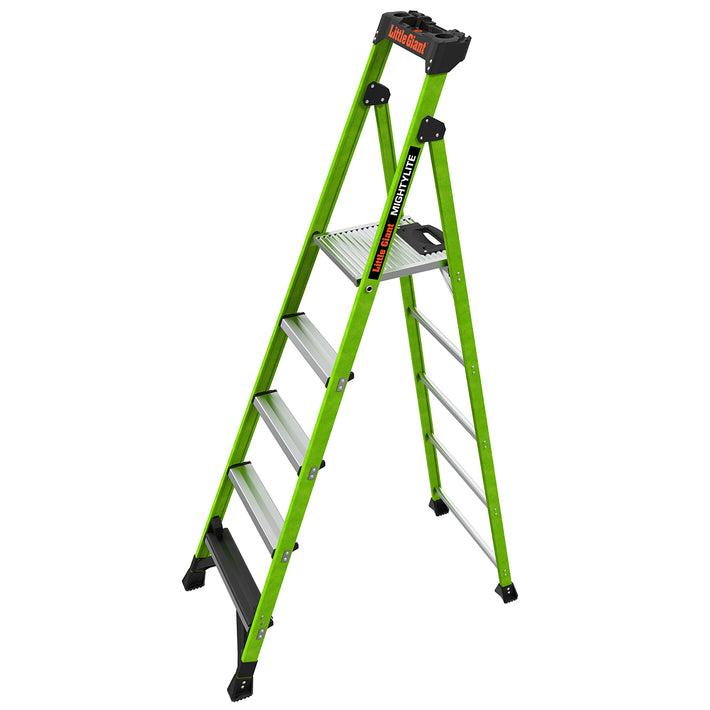This Team of Women Are Changing the Trades - Here's How
Celebrating Strong Women in the Trades
Strength takes many forms. Strength of will. Strength of body. Strength of mind. Strength to climb above challenges. Today, on International Women’s Day, Little Giant Ladders® celebrates the strong women of the world, especially the tradeswomen who are willing to break the mold to achieve their goals.
A Concerning Labor Shortage
For the most part, women account for less than 10 percent of people in skilled trades, which is interesting, given that women initially entered the workforce to fill a labor shortage during World War Two. Since that time, many women were encouraged to return to a domestic role or take on an office or retail position- roles that were considered more feminine in nature. Hardly any were encouraged to continue working as tradespeople, with many deeming trades work to be a purely masculine pursuit.
In the past 20 years, there has been a new cultural shift across the country, with parents and educators nationwide encouraging students to attend universities in order to avoid having to work a laborious job. Although well-intentioned, this dynamic resulted in a significant labor shortage for tradespeople across the country. This labor crisis needs to be filled quickly to meet the demand. For example, the American Welding Society predicts a need for 400,000 more welders by 2024.
The solution to this labor shortage is simple – we need more men and women to pursue careers in the trades. Working as a tradesperson is financially lucrative, fulfilling and provides a sense of variety and movement that many crave in their work. But to get people into these roles, there needs to be equal recruitment of men and women.
This revolutionary change to bring equal opportunities to the trades won’t happen overnight, but many groups are trying to help move the process along. One of those groups is located in Utah, USA, and is called The House That She Built.

About The House That She Built
In 2019, a local chapter of Professional Women in Building gathered to discuss how they could help more women join the trades. Their primary goal was to create a scholarship fund for women who wanted to go into construction, but initially, they weren’t entirely sure how to make that happen.
“The idea was thrown out during a round-table discussion,” said Natalie Miles from The House That She Built. “Someone said, ‘You should build a house entirely by females.’ Everyone kind of looked around at each other and was like, we can do that.” Natalie went on to explain that most people told them that they couldn’t do that, to which she said, “Actually, yes, we can. Watch us.”

“The reason we want to create a scholarship fund for women is to make it easier for women to enter the trades. It’s between one and a half and three percent of women in the trades. And that’s ridiculous. It should be much higher than that. We may not reach 50% anytime soon, but it should be higher,” said Kristi Allen from The House That She Built. She went on to say, “We want to break down those barriers. We want to show women that this is a place for them. And then we want to make it financially easy for them to learn a new trade. You have to learn a new skill, which requires a time commitment and money. So, if we can help them with that and make it easier for them to get into the industry, then that’s just one step closer to getting more women in construction.”
Challenges Faced at The House That She Built
Overwhelmingly, these women’s biggest hurdle on this project to build a home has been finding more women in construction, especially women in construction, who can help.
“We are all so busy right now in our industry,” said Kristi Allen from The House That She Built. “We have a labor shortage, so trying to get women specifically to come out, and coordinating with our other volunteers, and with material volunteers. The logistics have been way more difficult than I expected.”

As word spread about the project, the crew at The House That She Built began getting female volunteers from across the country, which has helped alleviate their personal labor shortage.
“We had plumbers come out from Pennsylvania. We had two sisters come out from Montana to hang drywall. We’ve had a lot of support from women outside of Utah that have seen our vision and want to come out, which is great. But the hurdle is finding enough women in the trades, which is exactly why we are doing this,” Natalie explained.
Redemption for the Project
Natalie works on material donations for the project. At the start of the project, she would reach out to companies asking for donations of material. She would explain the project and would receive condescending comments like, “Oh, that’s cute. Maybe we can give you a discount.” She was able to get a few commitments, but not many. Still, she and the team persevered.
After COVID hit the US, Natalie would follow-up with those companies who had made commitments, but the vast majority backed out due to new budget constraints. Although disappointing, she and the women at The House That She Built didn’t give up.
“And the thing is, people caught on to what we were doing here in Utah,” Natalie said. “People were like, ‘Wow! Do you hear what these girls are doing? They’re building a house.’ From July on, every day, I was getting a call from somebody. Marketing for Samsung, Sherwin Williams, all of these big companies. People being like, ‘We heard what you ladies are doing. We want to help you. We want inclusivity. We want to donate. What do you need?’”
Now, almost every day, the team at The House That She Built gets phone calls from companies that share the vision of helping more women get into construction. All of the women we spoke to at the job site expressed the same kind of gratitude to be a part of a project that has received such support in this unifying vision.

The House That She Built Experience
Each of the women on the project we spoke with remarked on how overwhelmingly positive this building experience has been. Many noted that there were some distinct differences between working with women and working predominantly with men.
“This has been a new experience for me,” said Sandy Larsen, General Contractor at The House That She Built. “I have actually really only worked with men as sub-contractors on all of my projects. In the beginning, I wasn’t sure how this was going to be with so many women and so many strong personalities. And it did take us a little while to find our groove, but we did find it, and everyone is working really well together. I feel like we’re building a great product.”
“I love the collaboration with the other women,” Crystal Grimes explained. “I feel like I will have an idea of how things will go, and then seeing how the others think about things and seeing that different perspective has been very educating.”
Natalie’s perspective of the community of women builders was, “The difference between being on a job site that’s predominantly male and a job site like this is that I feel like I have a place, I have a say, and I have a voice when I’m in a job full of women. When I go to a predominantly male job site, I feel a bit more insecure. Like, am I supposed to be here? Do I know what I’m doing? For the most part, males don’t take me seriously. I can walk around a job site and the way I might be treated like I don’t know this from that. Around here, with these women, who are experienced in their fields – and if they aren’t experienced, they are learning. There’s a great sense of community on a site like this.”
What Does Being a Strong Woman Mean to You?
Being on-site at The House That She Built was inspiring. There was an energy to the job site, and it was easy to see that each of the tradeswomen there were proud to be a part of the experience. Seeing that kind of passion, we wanted to hear from them - what does being a strong woman mean to you? Overwhelmingly, all of the women said that confidence and being a leader, rather than a follower, makes all the difference in becoming a strong woman.
“Being a strong woman means that you show up and you do what you say you’re going to do. You do it with a smile on your face. You show up and have confidence in what you do. Being a strong woman- you can be physically strong. Being a woman in construction, you have to be physically strong, for the most part. But you have to be mentally strong too. Being a woman in the trades, most likely, we are going to be surrounded by men. You have to be strong enough to show up on the job and have the confidence that you belong there. That you own that spot in construction. And that’s what it means to be strong. Own who you are and what you do. And don’t let anyone let you think different.” – Natalie Miles
“Being a strong woman to me means being confident and knowing that you know what you’re doing in your job and you’re confident in that. It doesn’t mean bossing people around or pushing people around. It means working collaboratively with other people and bringing our strengths together to succeed.” – Kristi Allen
“Being a strong woman means being a leader, being able to take control when you need to and make those decisions. Being a leader and not just a follower. – Ivy Stout, framer at The House That She Built

“Being a strong woman means being able to make the decisions that need to be made on the job site—being able to take control of your destiny- whether it’s in your work or your personal life. Make the decisions you need to and accept the consequences of the things you choose to do. Have confidence in yourself and keep moving forward. Things don’t always go right, but you can figure out a way to fix things and move forward and be very happy in what you’re doing.” – Sandy Larsen

“Being a strong woman is being confident. Don’t let other people tell you what you can do. If you’re a strong woman, go show everybody that you’re a strong woman. Prove it.” – Katie Walters, framer at The House That She Built
Advice to Women Entering the Trades
As we looked around the job site, we saw strong, confident women who were proud of their profession. Although some of them grew up in households where the trades were a big part of life, not all did; and as a result, some of them had to learn how to be more confident and prouder of their skill sets.
For some women, entering a predominantly male environment is an intimidating prospect. But these skilled tradeswomen we met said that shouldn’t be a deterrent to pursuing the life you want to lead.
Crystal Grimes at The House That She Built had some poignant advice for women entering the trades. “The advice I would give to women interested in the trades is, go and do it. With less than 3% of women in the trades – and there’s a big deficit in trades, as we know, it’s affecting the construction industry. If we continue like this, it’s going to affect prices in the future. And women can do it. I don’t know that a lot of women think about that as an option for them. But not all women are going to be stay-at-home-moms. Not all women are going to go to college. Not all women are going to do what would typically be a domestic art. So, they can do it. They can get in there and make some big strides in the trades industry.”

Katie Walters, who grew up with a family of tradespeople, said, “If you’re a woman and you want to get in the trades, just do it. Don’t let society tell you otherwise. Women are amazing. They have amazing skills. They can do it all as well. Don’t be afraid.”

Other advice posed by the women included joining groups for women in construction. “I would tell women who are going into the trades a couple of things,” said Sandy Larsen. “One, try to get involved in local home builder associations and meet other women who are also in construction. I feel like construction can be a really lonely world for women if they don’t know other ladies who are also working. The second thing I would tell them is if they’re interested in learning something, do it. There’s nothing they can’t do.”
The Future of The House That She Built
So, what does the future of The House That She Built look like? When they finish the house this spring, they all plan to celebrate the project’s completion and take some time to enjoy the work they put into making something so unique.
Amidst this process, the group has been avidly posting on social media to share their message and the progress they’ve made on the project. After finishing this house, they intend to continue educating the public.
“One of our goals is to let more women know about what we are doing in this industry and with this project. We are going to spend the next year letting everyone know what we are doing out here in Utah, and then we’re going to do it again!” Natalie proudly stated. “We’re here to break that glass ceiling and then we’re going to fly. “
With the proceeds of this home, The House That She Built was able to make a great scholarship fund. With material and labor donations on the project, the house was built with a small amount of money. Once the house has sold, they will be able to make a significant scholarship fund for women going into the trades.
“We hope they take us up on that scholarship and then with the next home that they build, they come out and help us build it,” said Natalie Miles
All in all, whether you are a pro tradesperson or a DIYer, remember that “You’re capable. Women are capable, said Crystal Grimes. “Follow your dreams and do what you can to learn new things. A strong woman is someone who is always learning and is dedicated to learning that process.”

Get Involved
Learn more about The House That She Built here. If you are interested in getting involved in this project, we encourage you to reach out to their team.



